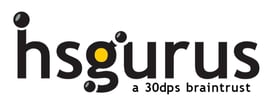Once Upon a Time… Are You Using Storytelling in Your Marketing?

“After crossing the raging river, I tracked the beast into a deep, forbidding forest. The sun was setting and I began to see red eyes watching me from the darkness as I hurried on. Breaking out of the trees and into a meadow, I encountered him at last light, the most majestic deer I have ever seen. He fought valiantly, but in the end I brought him down with my spear. Would you care to trade some of the fresh vegetables you have there for this delicious venison?”
And that, my friends, is the first ever use of storytelling in marketing... many thousands of years ago.
Now, contrast that with this: “Our venison is 100% meadow-fed, and is brought fresh, never frozen, directly to market. Barter for some TODAY!”
Did you feel the extra neurons firing as you read the first version? Well, they did. Scientists tell us that reading or hearing simple data causes only the language portions of our brain to activate. Reading or hearing stories, on the other hand, causes not only our language centers to fire, but also sparks additional areas that we would use if we were actually in the situation described. Our brains, it turns out, make little distinction between actual events and those we experience vicariously!
Now, you probably won’t include forbidding forests, red eyes, and majestic beasts in your brand story, but incorporating aspects of storytelling into your marketing efforts can produce tremendous benefits—especially if your stories sync well with those of your targeted buyer personas.
These advantages include:
- More Memorable — The additional brain activity initiated by stories gives readers more ways to recall the information. Even if they need a refresher on the specific details, the overall impression remains with them for quite a long time.
- More Persuasive — Even though the reader may not actually know the people in a story, the fact that those characters had a positive experience with your product or service feels like a good reason for them to give it a try (and feeling is the key in purchase decisions!).
- More Digestible — Stories use imagery and metaphors that make them simple to understand. Readers then have the option of storing the information as is or easily converting it to their own internal vocabulary.
- More Shareable — The fact that pure data is harder to remember is precisely the reason it is not often passed along to others. Sharing stories, however, is both a form of knowledge transfer and a kind of entertainment. And if your engaging story happens to go viral, that’s a huge bonus!
So, instead of giving your prospects a dry recitation of features and benefits, try asking them to pull up a chair, warm their hands by the fire, and listen as a fascinating story unfolds. We love to spin a good yarn at 30dps. Let’s talk about your story.


